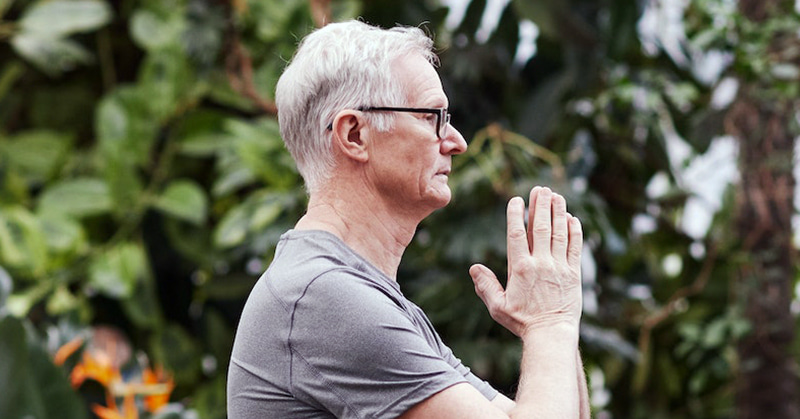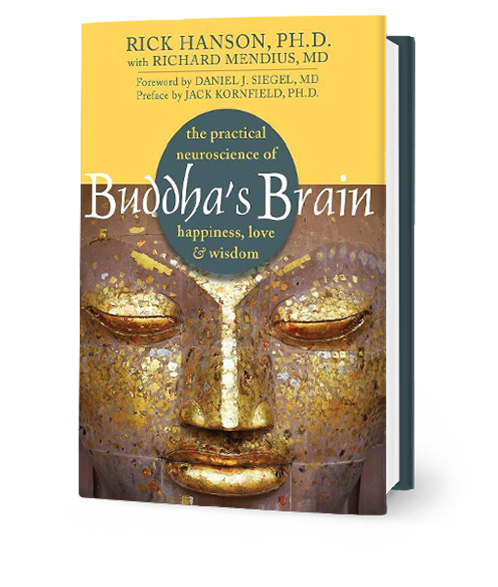RESOURCES TO GROW INNER STRENGTHS FOR OVERCOMING
Negativity and Anger
Why am I always so negative?
Our brains are wired to take in the bad, and ignore the good. That’s why it’s easier to ruminate over bad things than to bask in the pleasure of the good things in life. Because of the brain’s negativity bias, we’ve evolved to learn quickly from bad experiences, and slowly from good ones. This leaves us feeling more stressed, anxious, lonely, irritated, and inadequate than we need to be.
We can learn new ways of being. The way to build a foundation for happiness is to deliberately weave positive experiences into the fabric of your brain and your self.
FREE VIDEOS
How to Overcome the Negativity Bias
FREE READS
Simple Practices for Managing Negativity and Anger
Being Well Podcast Episodes
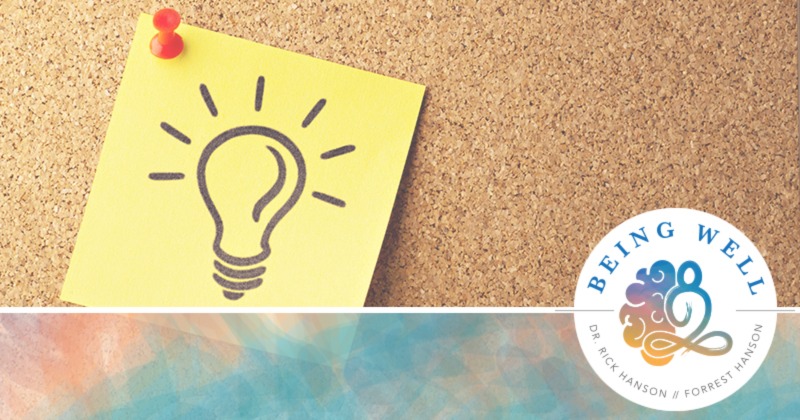
Being Well Podcast: How to Make Learning STICK
We dive into Rick’s recently published study on our capacity for deliberate growth. We talk a bit about the neurological components of learning, how the study worked, and what the practical takeaways are to help us make learning stick.
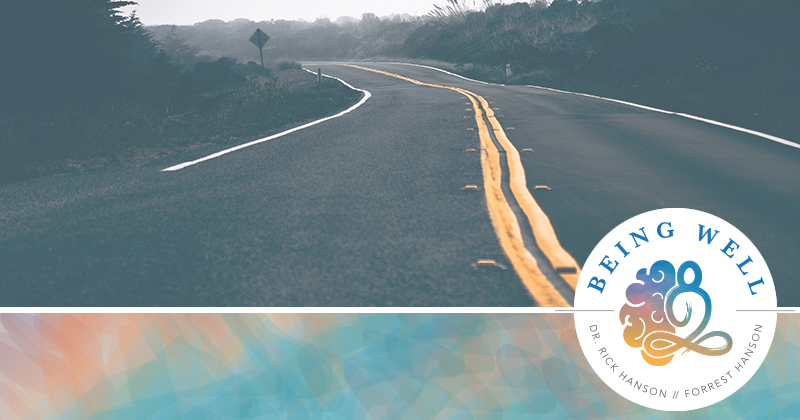
Being Well Podcast: Cognitive Bypassing: How to Get Out of Your Head
Cognitive bypassing occurs when we overthink to avoid feeling uncomfortable emotions like sadness, fear, or anger. In this episode, Forrest and Dr. Rick share their personal experiences with cognitive bypassing, and explore how we can step out of our heads, get in touch with our emotions, and live a more fulfilling life.
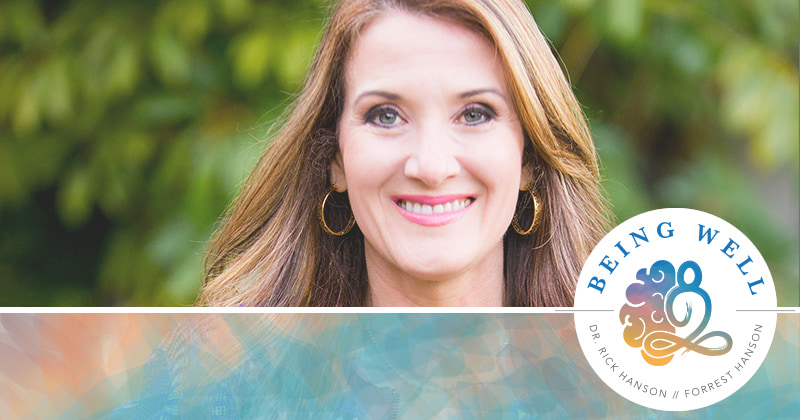
Being Well Podcast: Neuroplasticity Tools to Change Your (and your kid’s) Brain with Dr. Caroline Leaf
Dr. Caroline Leaf joins Rick and Forrest to explore how we can harness the power of neuroplasticity to clean up our mental mess…and teach our children to do the same.
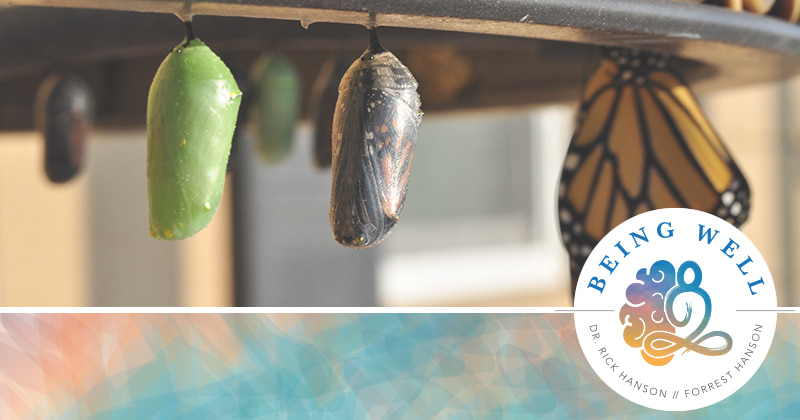
Being Well Podcast: Why Don’t We Get Better?
Forrest and Dr. Rick explore why we struggle to change that which matters most to us, how much change is realistically possible, what makes real change hard, the hidden barriers to lasting change, and what we can do about them.
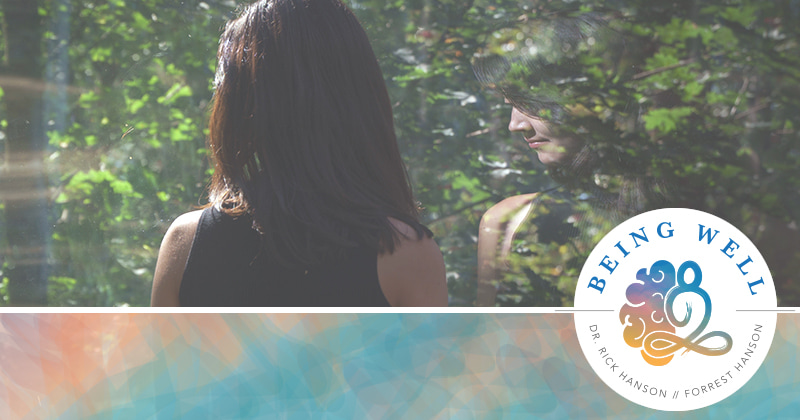
Being Well Podcast: Releasing Obsessive Thoughts: Rumination, OCD, and Dealing with Fear
We explore why we tend to get trapped in certain thoughts, the negative effects of rumination, and obsessive-compulsive disorder (OCD).
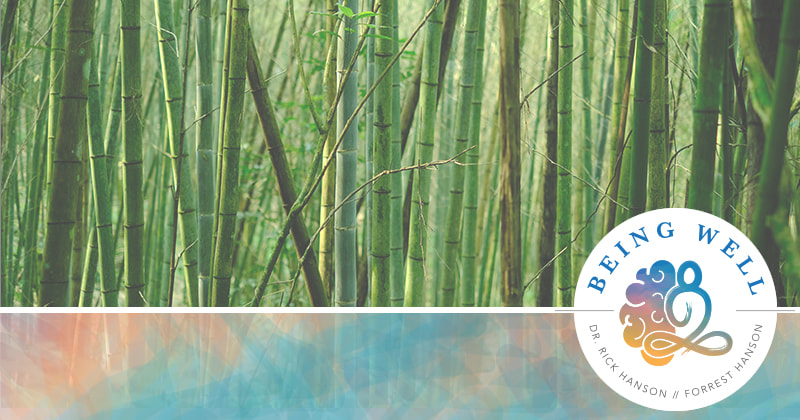
Being Well Podcast: How to Become Psychologically Flexible (from formerly rigid people)
Just like how physical flexibility is the amount of stretch in our muscles, the ability they have to bend without breaking, psychological flexibility is the same quality in our minds. It helps us look at situations in new lights, be open to our emotions, let go of old versions of ourselves, and step into new ways of being.

Being Well Podcast: How to Understand Anxiety and See Threats Clearly
Dr. Rick and Forrest focus on how we can see threats clearly and be the “right amount” of concerned.
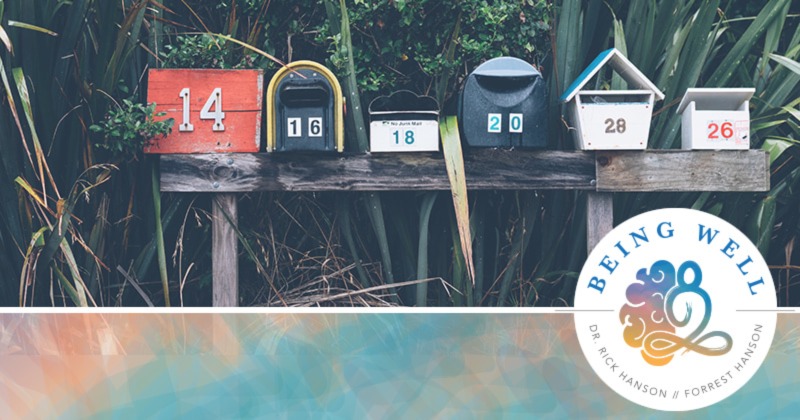
Being Well Podcast: Changing Old Patterns, Using Psychedelics Thoughtfully, and Exploring Human Nature: October Mailbag
Rick and Forrest answer questions from listeners, including what they’re still working on in their relationship, how we can disengage from obsessive thoughts and old patterns, Rick’s thoughts on psychedelics and how they can be used with discernment, and their views on whether human nature is innately cooperative or competitive.
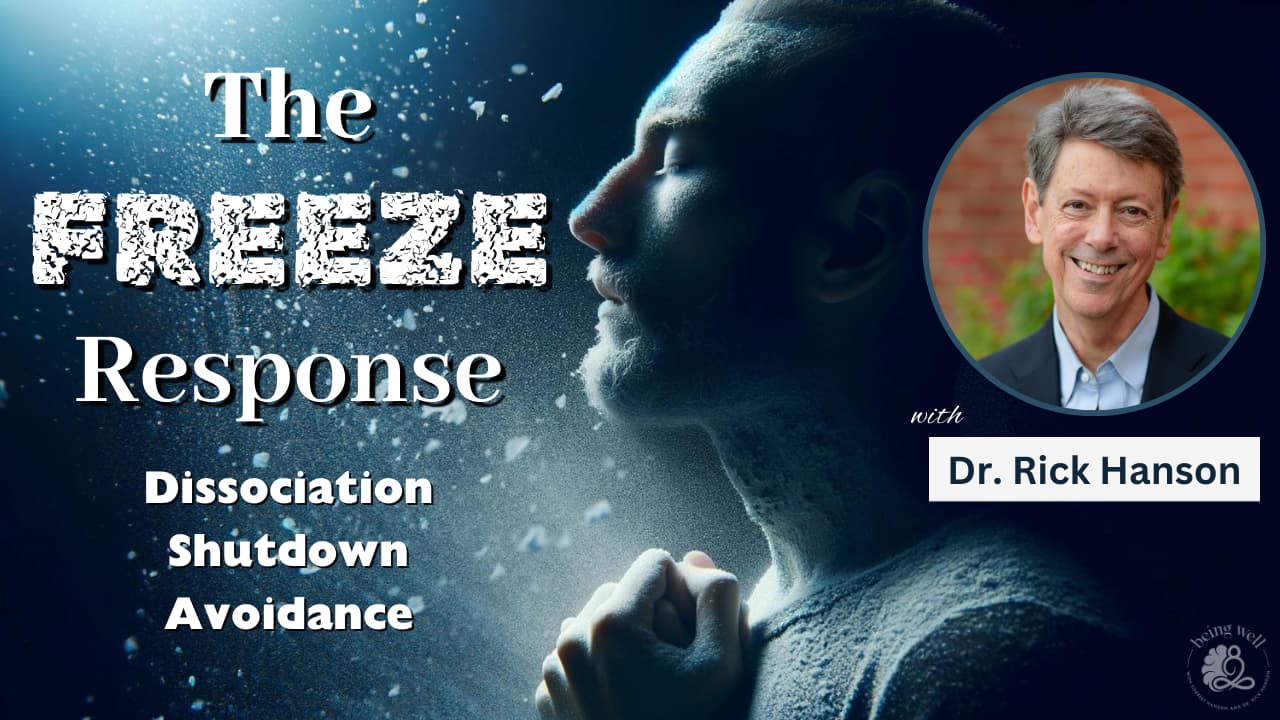
Being Well Podcast: Managing the Freeze Response: Dissociation, Emotional Shutdown, and Creating Safety
In one of our favorite episodes to date, Dr. Rick and Forrest explore managing the freeze response in detail.
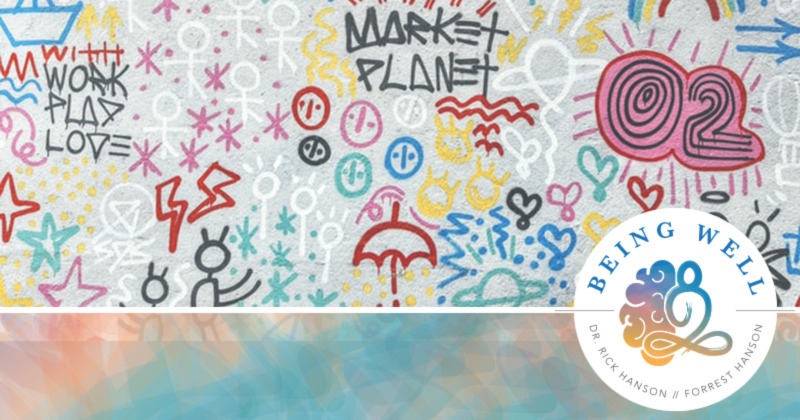
Being Well Podcast: Changing Old Patterns, Self-Awareness, and Repairing with Family: Mailbag
Forrest and I open up the mailbag to explore a variety of questions from our listeners. We talk about what causes our brains to become attached to unwanted habits, how to know which of your thoughts are worth listening to, and the pros and cons of Forrest’s tendency to say “kind of” so often.
Online Course
The Positive
Neuroplasticity Training
Our brains are wired to take in the bad, and ignore the good.
Join Dr. Rick Hanson for a 6-week journey in Positive Neuroplasticity to override the brain’s negative tendencies and tap the hidden power of everyday experiences.

Frequently Asked Questions
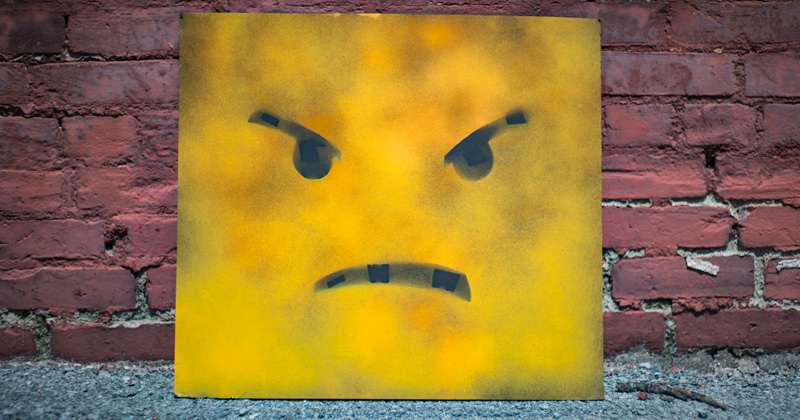
Psychologist and Author Dr. Rick Hanson answers questions about
Negativity and Anger
Is there an explanation for the negativity bias in regard to learned helplessness?
You are speaking here of our vulnerability, shared with other mammals such as dogs, to acquire what is called “learned helplessness.” There is much research, pioneered by Martin Seligman, on this topic that has established the fact of this phenomenon. You ask a very interesting question: Why do we and other animals have this vulnerability – including to the sense of hopelessness, futility, and defeat? It could just be an inadvertent side effect of evolution. On the other hand, I can imagine ways that the acquisition of helplessness after a single painful experience of it could in fact help keep our animal and hominid/human ancestors alive in the wild by discouraging them from venturing out and exposing themselves to predators or aggression from others in their band.
Where do awe and gratitude fit within the 3 core needs of safety, satisfaction, and connection?
I think of the three needs (safety, satisfaction, connection) and related motivational and regulatory systems (avoiding harms, approaching rewards, attaching to others) as spacious organizing frameworks, not a rigid ideology. They are loosely related to the three stage (both anatomical and functional) evolution of the brain – but of course the whole brain works together to meet our needs, and to avoid and approach and attach.
Note that one system could draw on the other two systems to fulfill its needs, such as reaching out to others (attaching system) for support with a threat (safety need). And some experiences blend systems to meet multiple needs, such as being cared about helping us to feel safer and more satisfied and more connected.
Gratitude is particularly related to satisfaction and approaching rewards. Still, we could be grateful for something that brings safety or connection (or both).
Awe is rewarding, certainly (satisfaction) while often involving a sense of connection with vastness.
Where do my negative or defensive reactions come from?
There is a common but mistaken idea these days: there is no particular neural “center” or “region” of emotional reactivity, including the brainstem. And reactivity is not restricted to the safety needs that are also managed by the whole brain, though the primal roots of safety management (including literally keeping the heart beating) are grounded in the brainstem.
You’ll see this conflation of emotional reactivity with the “reptilian brain” slash safety issues a lot in the culture and it’s just wrong . . . and weirdly prejudicial toward our little inner lizards! TONS of reactivity involve satisfaction/reward-seeking systems in the subcortex and connecting/attaching systems in the neocortex.
There’s also in the culture a simplistic conflation of neocortex/cognition/cool/thinking slow/reasonable/good, along with a related conflation of subcortex/emotion/hot/thinking fast/reactive/bad. Yes the neocortex enables conceptualizing and complex formal reasoning . . . . but it is full of crazy ideas and perspectives that makes us suffer and harm. Yes the subcortex enables the experience and effects of emotion . . . . but it also is the primary source of a background feeling of basic bodily well-being in the wallpaper of the mind.
In addition to the value of accuracy in its own right, another reason I try to flag these matters is because the frequent framing of the more ancient, nonverbal, and emotional aspects of the brain that we see in the culture sends us down a slippery slope toward the old views that emotion (and, um, women) is primitive and problematic while reason (and, um, men) is modern and civilized.
Can you explain what you mean by “The brain is like Velcro for negative experiences and Teflon for positives ones?"
As the brain evolved, it was critically important to learn from negative experiences – if one survived them! “Once burned, twice shy.” So the brain has specialized circuits that register negative experiences immediately in emotional memory. On the other hand, positive experiences – unless they are very novel or intense – have standard issue memory systems, and these require that something be held in awareness for many seconds in a row to transfer from short-term memory buffers to long-term storage.
Since we rarely do this, most positive experiences flow through the brain like water through a sieve, while negative ones are caught every time. Thus my metaphor of Velcro and Teflon – an example of what scientists call the “negativity bias” of the brain.
The effects include: a growing sensitivity to stress, upset, and other negative experiences; a tendency toward pessimism, regret, and resentment; and a long shadows cast by old pain.
I question your paradigm of the reptilian, mammalian, and primate brain in terms of the development of our emotions. I’ve read other theories that dispute this.
I’m familiar with the work of other brain-research scholars, such as Lisa Feldman Barrett, Daniel Kahneman, Jaak Panksepp, and Steve Porges. With respect, I think that the careful and nuanced way I write about the development of our brains is in fact scientifically accurate. (Much as the work of other scholars is scientifically accurate; different scholars emphasize different facts, and then sometimes rather different interpretations.)
In broad outline, the brain is indeed structured in three major layers that emerged during the reptilian, mammalian, and primate/human stages of evolution, with a high degree of similarity between the genetic instructions for and operation of each layer in us today and that layer in our mammal or reptile cousins. And today the whole brain works together for our functioning, with each part of it making its contributions.
With mental training, we can draw on the capabilities of more evolutionarily recent regions to manage older ones, but those older regions within us do have the qualities I attribute to them – and even with mental training we can see their rigidity, impulsivity, and vulnerabilities in everyday life.
How do I mesh the two tendencies of the brain: to be alert and tense, and its default setting of calm and contentment?
Basically, I think the evidence is that both are true: there is an ongoing trickle of background anxiety to keep us vigilant, and there is also a strong inclination to default to the “responsive mode” of being peaceful, happy, and loving when we are not disturbed. Putting these two apparent facts together, I think the trickle of anxiety prompts us to scan for threat, but if we find that all is well for now, then we default to the responsive mode, and then this cycle repeats itself a moment later.
For me the pragmatic point is to discern real threats and address them, while also recognizing the strong bias from evolution to look for threats behind every bush and thus appreciating the importance of exerting compensatory influences in a variety of ways, from inner practices such as I focus on to social support and (hopefully) decent health insurance.
What is one practice we can adopt in our everyday lives to overcome our negativity bias?
Several times a day, take in the good by really savoring a positive experience for 10-20 seconds or more. (The second chapter of Just One Thing is about this.)
Over time, much as repeated negative experiences make the brain more sensitive to them, I believe that repeatedly savoring positive experiences can train your brain to internalize them increasingly rapidly – in effect, making your brain like Velcro for the positive and Teflon for the negative.
Do you know whether brains of people raised in non-western, cultures like Bhutan or Tibet have the Velcro/Teflon wiring?
Great question!
I don’t think there are any scientific studies on this particular topic – though there is a lot of general research on the universal nature of the fundamental properties of the human brain, that cross cultures. Interestingly, there is much less genetic variation among the members of the human species than among the other primates; apparently, there were several “choke points” in our evolution when less than 100,000 thousand (and at one point around only 15,000 “Java Men” lived: in effect, they were an endangered species at that time). So we all have pretty similar brains, which all do have an evolved tendency toward threat scanning/reaction/memory storage. Then psychological factors shape the expression of those tendencies, including the loving and positive culture of Bhutan and Tibet.
In a nutshell, two things are both true: we have strong tendencies toward negativity and craving, but we also have strong capacities to develop peacefulness, happiness, and love – and I believe these are in fact much stronger! But we must use them, as so clearly the Dalai Lama and others have done.
Why do people beat themselves up? What process is behind that?
I think people beat themselves up – which is different from healthy guidance of oneself (which includes appropriate winces of remorse or shame) – for two reasons: too much inner attacking, and too little inner nurturance. These two forces in the mind are out of balance. Why? Multiple reasons, including individual differences in temperament (some people are more prone to anxiety or grumpiness). But for most people the primary sources are what they have internalized (especially as a child) from their family, peers, and culture. Then, once harsh self-criticism has been internalized along with insufficient internalization of self-nurturance, beating oneself up can take on a life of its own, both as simply a habit and as a way (that goes much too far, at considerable cost) to avoid the possibility of making mistakes or looking bad in front of others.
Whole networks of neurons and related and complex physical processes (e.g., neurotransmitter activity, epigenetic processes) are the basis for acquiring fears, including because a person has been on the receiving end of much anger from others. In other words, learning occurs: emotional, social, somatic, motivational, attitudinal learning: enduring changes in neural structure or function due to a person’s experiences. Check out Joseph LeDoux and the learning of anxiety and fear.
The amygdala also flags experiences as personally relevant, with a bias in most people’s brains toward flagging what is negatively relevant. Then the hippocampus gets involved, tagging that relevant experience for storage. (I’m simplifying a complex process, that also involves other circuitry in the brain.) The amygdala and hippocampus have receptors for various neurochemicals, including oxytocin, and over time these subcortical parts of the brain (two of each, on either side of the brain) can be modified by our experiences; in effect, they “learn,” too.
How can one express, feel and process negative emotions associated with an experience thoroughly and not create and strengthen negative neural pathways associated with those experiences at the same time?
Basically, three things are simultaneously true:
- Being with and letting go of an experience – in a mindful way, spacious, disidentified way – does not reinforce it and in fact helps to release it. “A healthy cry” is a beautiful, vastly important thing.
- Being identified with our negative reactions and marinating in them reinforces them.
- Positive experiences are not “learned” efficiently so it’s useful to deliberately sustain and internalize them
The points you raise are right at the intersection of key questions in working with trauma: does revisiting the material reinforce it or release it? Check out my talk about ways to work with the mind.
How can you erase negative associations in neural structure rather than overwriting them?
When something bad happens the brain sometimes starts to associate neutral stimulus with negative stimulus. There’s been a lot of study on this with animals. A few human examples might be being in an elevator after having a panic attack in one, or working with an authority figure when you’ve had issues with authority in the past, or being outside in the dark after being assaulted out in the dark, or speaking from the heart when that was shamed when you were young. The situations are not inherently bad, but over time we build up negative associations with them because we’ve been hurt in the past. It’s the classic idiom – once burnt, twice shy.
In studies on rats, and also in new studies with humans, the key is (A) the activation of the learned link between the neutral and the negative stimulus, and (B) the repeated activation of the neutral stimulus with no negative associations during the window of re-consolidation.
In practical terms, this would be a matter of surfacing a person’s association between a neutral and negative stimulus, and helping them understand conceptually (at least) that the neutral stimulus is actually inherently neutral. Then, after this process, repeatedly reactivate the neutral stimulus with no negative associations for the next hour or so.
Minimally, you could reactivate the neutral stimulus with neutral associations. And for maximum effect, I think it could be useful to associate the neutral stimulus with authentic positive associations, which you can think of as “antidote experiences.”
Does it take 5 or 10 positive inputs to offset every negative one?
I think the 5:1 (or 3:1) ratio idea comes from the work of the Gottmans, in which they found that couples with less than a 5:1 ratio of good to bad interactions were at heightened risk for divorce. A related idea comes from Barbara Fredrickson, that people really start to thrive when they have more than a 3:1 ratio of good to bad experiences over time.
There’s been some pushback against these exact numbers, but the basic idea is solid: during evolution (and still today), negative experiences tend to have more urgency and impact than positive ones. In the wild, if you don’t get a “carrot” today, you’ll have a chance to get one tomorrow…but if you don’t avoid that “stick” today, ulp, no more carrots forever. So we are naturally more affected by negative experiences in the moment, plus naturally designed to internalize them. Positive experiences have a quantity effect in the lives of most people, but negative experiences have a quality effect: they are generally more powerful.
So for me the bottom line is:
- Deal with the bad – Recognize injustice, turn off the stove, assert yourself, etc.
- Turn to the good – See what is working amidst what is not; see the good in yourself and others.
- Take in the good – Don’t waste it on your brain. Slow down to stay with the experience for a breath or longer, feel it in your body, and focus on what feels good about it.
Meanwhile, recognize your impact on others. Try to make sure that their good moments with you outnumber the bad ones by at least 3…or 5…or 10! (a good way to stay married…)
If someone let's go of the negative thoughts in their brain and actively takes in the good, it seems that could be the same as running away from negative feelings in the mind/body, which is counter to mindfulness.
My take, with a bucket of salt:
- Mindfulness is a means to an end, not an end in itself.
- Mindfulness itself is sustained attention to something, typically with some meta-cognitive awareness of the quality of one’s attention. Mindfulness itself is morally neutral. A burglar could be very mindful. If people want, they can add other qualities to the mindfulness, such as an attitude of acceptance and friendliness toward the objects of attention, such as toward whatever may pass through the mind.
- Mindfulness itself does not try to change the objects of attention. But mindfulness is not necessarily the only thing happening in the mind! If one likes, one could add some effort, hopefully wise, to change the objects of attention. A person could be mindful of her stress and negative thoughts for a while; then she could both be mindful and make an effort to shift what is in her mind; finally, she could be mindful of the results of her efforts.
- As you can see, a certain set of presumptions have grown up around mindfulness in the past few decades that actually are additions to the original idea, notably the original idea promoted by the Buddha 2500 years ago. In particular, people talk as if an explicit stance against working with the contents of awareness is innate feature of mindfulness, and it is not. I recommend ready my paper, the Noble Eightfold Path for more on this.
- Mindfulness itself is always helpful. And sometimes it is useful for a person to drop any effort to shift contents of awareness in any direction whatsoever; sometimes this kind of “choiceless awareness” alone helps negative thoughts release.
- But often mindfulness alone is not enough. A lot of crud fills the mind, and it persists because the brain is a physical object that does not tend to change unless something changes it (in effect, Newton’s First Law). When you appreciate how embodied we are, and how much the brain is a learning organ that builds structure that it maintains unless it is actually changed, you get very interested in effective and efficient effort. Since neurons that fire together, wire together, keeping negative material in awareness can actually deepen its hold upon you.
- In essence, there are two great elements in psychological healing, everyday well being and effectiveness, personal growth, and spiritual practice: being with and working with (in Buddhism: Right Mindfulness and Right Effort). These are the two great wings that help us fly. Each wing has strengths. And the wings work together: mindfulness improves our efforts, and it takes skillful effort to be stably mindful.
- Then you can make a free and wise choice, moment by moment, as to what will do the most good for oneself, or one’s client: lean toward pure mindfulness, or lean toward mindful efforts. Both are beautiful, and help us fly.
Your idea about achieving happiness is to fill your implicit memory with good experiences rather than negative ones. Have I got that right?
Filling implicit memory with good experiences is one way to achieve greater happiness – and to help heal old pain and increase resources for coping. Other ways to accomplish these ends include increasing mindfulness, releasing negative beliefs and feelings, learning to activate the parasympathetic nervous system, and taking constructive action. That said, taking in the good is really important, both on general grounds and to compensate for the brain’s innate negativity bias.
Where does the reference for the 5, 10, or 20 seconds it takes to commit positive experiences to long-term memory vs. a lesser period of time for negative ones comes from?
There is no specific number (5 or 10 or 20) – those are just shorthand references I use that seem to work for people. The key is a matter of degree: the longer, the more intense, and the more felt in the body an experience is the more it will be encoded in neural structure. This is a fundamental and widely known fact in the neuropsychology of learning (including emotional learning). It’s also known that negative experiences have an advantage: they get encoded more readily. So we are trying to do two things: steepen the learning curve from useful, beneficial experiences, and compensate for the negativity bias of the brain.
As soon as I notice a good thing, I automatically have anxiety about not being able to hold onto it long enough. Help!
Try this: when engaging a basic sensual pleasure like eating a strawberry or enjoying a warm shower or bath, give yourself over to savoring the pleasure without anxiety. It’s natural for your mind to wander slightly; you needn’t be anxious about this; you’re still encoding the experience in implicit memory.
Also try focusing on breathing and giving yourself over to it.
And then use the learning from these experiences to apply to receiving other positive experiences.
What would you suggest to help someone persist in practicing HEAL?
Three nice things about HEAL:
- It’s usually quick and in the flow of everyday life, a dozen seconds here and half a minute there, a few times a day, helping good learning land and stick to your ribs.
- It’s usually enjoyable, since – remarkably – most psychologically beneficial experiences are enjoyable. We have evolved rewarding associations to them because they actually help us survive to pass on our genes, in addition to all the benefits in terms of quality of life. These experiences feel good because they are good for us and others.
- HEAL makes real changes in your brain, which is motivating to know.
So I find that using HEAL becomes pretty natural for people, like any good habit. If you’re a mental health professional you can do things with clients to encourage them to focus on key resource experiences between sessions, or simply put little reminders around them like doing HEAL at specific times such as at meals or just before bed or just after exercising or meditating.
As to regular mindfulness practice, you can use HEAL to internalize the experience of mindfulness so it comes more easily and you get better at it – just like internalizing the experience of any other inner strength, to grow it inside yourself. Similarly, you can use HEAL to internalize the benefits of mindfulness – or related practices such as meditation – so you get more motivated to practice as you experience its rewards.
Also, try making a commitment to meditate – which could include for a person the theistic version of contemplative practice, which is prayer – at least one minute a day.
Does having an implicit memory full of positive experiences make you less dependent on day-to-day or moment-to-moment events for your happiness?
Exactly right!
People who have not internalized positive experiences and other resources are dependent upon the outside world for the provision of them – or they get stoic or defended and deny their need for such experiences. This is a mistake since they are a universal, human need, as well as the basis for coping and for the strength of mind and heart it takes to stick up for those we love and make this world a better place.
But if you do take in positive experiences – particularly the ones that are key resources for a history of lacks or wounds (e.g., current experiences of feeling cared about are critically important for healing old experiences of abandonment, rejection, dismissal, loneliness) – then you fill up your own cup and become less dependent on external conditions; in effect, your happiness becomes increasingly unconditional.
If you focus on the positive for long enough, does it actually make your brain more receptive to doing that?
Research shows that repeated practice of any positive behavior (e.g., gratitude) will increasingly incline the mind in that direction. Presumably, since all mental activity and changes entail neural activity and changes in brain structure, this changing inclination of mind must involve enduring changes in neural networks and activations.
More specifically, there is much research showing that negative experiences gradually sensitize neural networks, including for memory, in a negative direction. I don’t know of any specific studies describing an opposite effect, though there are studies showing that positive experiences and thoughts can gradually desensitize negative sensitization. This said, it’s plausible to me that a person could gradually sensitize the brain to “the good” since sensitization is such a general dynamic/mechanism in the brain – thus making the brain like Velcro for the positive. This has certainly been my own experience; I feel like I am much faster than I used to be at registering a positive experience so it “sticks to my ribs.”
If someone was to adopt just one of daily practice to foster a buddha brain, which would you recommend?
Taking in the good. I’ve been doing practices for 35 years (I’ve had a lot to practice with!), and this is my all-time favorite practice. I use it every day.
Do you have any suggestions for my fear that the closer I get to happiness the more I feel deeply afraid that something bad will happen?
You raise a real and common concern that if we feel good (putting it simply), then bad things will happen. Perhaps we will lower our guard, or others will punish us, or we’ll be disloyal to others who suffer.
I’ve thought a lot about this issue, with these reflections:
- We can still be aware of threats even while feeling good.
- In fact, taking in good feelings makes us better at dealing with threats.
- Most people really want us to feel good and support us in feeling good, and usually we can gradually disengage from those who do not.
- You can become increasingly aware of the underlying psychological patterns that associate fear with feeling good. Maybe those patterns made sense when you were young. But not today. With practice, you can be mindful of this reactivated psychological material and use the methods that I’ve covered extensively both on this site and in the Foundations of Well-being program (based on Hardwiring Happiness), including the HEAL process, to soothe, ease, contextualize, and eventually replace those feelings.
- Spending time with people who celebrate your aliveness, passion, and joy without shaming it is very good to do.
Your immersion in a beneficial experience is heightening – in the language of the Buddha – part of the “chain of dependent origination.” The “pleasant” feeling tone you’re experiencing (also called the hedonic tone in psychology) is causing “craving” for the experience to continue (so that the recognition of its impermanence is distressing), and you’re then “clinging” to it as an essentialized, stabilized thing. As the Buddha teaches, this leads to suffering.
For this, a dharma-centric approach would be to cultivate more equanimity, so that the heightened pleasantness of the experience encounters a heightened “shock absorber” of equanimity, and you are able to enjoy the pleasantness without craving or clinging to it. Also, as the pleasantness is repeatedly internalized, it should shift your overall state into greater well-being and less basis for craving and clinging altogether.
It seems like your brain is associating one thing with another, such as love for your child —> fear for their well-being. For that, I’d suggest developing mindfulness of the fear, then opening to the felt knowing that she is OK, then returning to love for her. Intuitively, my hunch is that you have a huge heart. The Link step in the HEAL process, repeatedly taking in antidote experiences for the unresolved pain or traumatic residues, could really be helpful here.
Research suggests that people who use positive affirmations feel the gap between where they are and where they want to be, making them feel worse. Do you have an explanation for the seeming discrepancy this and your work?
I know about this research, and it’s interesting. I think it reveals a fairly narrow and specific phenomenon in which people who are relatively unhappy think about something positive and then feel worse because the gap between their current state and where they want to be is highlighted. For this to occur, the “happiness intervention” must be ineffective, otherwise their mood would be lifted and the gap would close between their current state and where they want to be. So what this research actually means is that affirmations are not very effective, at least the way they were done in the study and others like it, and that we need to make effective efforts in the mind to increase happiness (broadly defined).
The sort of skepticism about making deliberate efforts to nudge the mind in a happier direction that is implicit in this study and in related critiques of trying to be happy must also be considered in light of the thousands of studies (plus personal experiences) showing the general effectiveness of interventions to increase positive states and decrease negative ones. It’s interesting that dozens of these intervention studies are published every month – reducing anxiety, increasing self-compassion, regulating anger, increasing gratitude, etc. etc. – and we never hear about them. But let one study appear from a – ah – grumpier perspective, and it’s in the news. This is what’s particularly curious to me, the investment in skepticism about and frank dismissal of deliberate efforts to increase mental health and happiness.
Is it important for taking in the good to recall actual experiences or can they be imaginary?
Once you have a beneficial experience occurring in your mind, it does not matter what its source was, in terms of installing its essence into your brain.
Often the source of a beneficial (usually enjoyable) experience is simply the flow of daily life, and we just notice what is happening already. Other times we deliberately create an experience, and two ways to do that are to recall past actual experiences or to imagine possible ones, such as imagining how one wants to act in the future (often with a sense of what could feel good about doing that). Both of these two ways are effective methods to self-generating beneficial experiences.
In working with Taking in the Good, is the explicit number of seconds a variable, and therefore not necessary to be so specific?
I would say this in a fuzzier but more accurate way:
- In general, the brain registers negative information and experiences more rapidly than positive information and experiences.
- In effect, while positive experiences may be more frequent than negative ones, negative experiences generally have more impact.
So, key practical implications include:
- Hold negative experiences in spacious mindful awareness, which will tend to reduce the reinforcement of them;
- Dwell on positive experiences for a breath or two or longer – and use other HEAL techniques as you like – to heighten their impact on your brain.
Would the Taking in the Good process be applicable with people who have attempted suicide or would you recommend that the client have a certain degree of stability before being able to move into that process?
First, a couple cautions:
- If someone is severely depressed, by definition they are fairly incapable of activating or sustaining an enjoyable experience. As I write in Hardwiring Happiness, with this population I think taking in the good is contraindicated. The one possible exception to this view I offer diffidently: basic experiences of sensual pleasure (e.g., drinking water when thirsty, putting on a sweater when cold, eating a sweet) might be an opportunity to draw attention to a positive experience and – building one second at a time – help the person stay with this experience. This can possibly be a path toward slowly increasing the capacity for enjoyable experiences.
- The “be with it” phase of practice is really important to honor before shifting into the second (reducing, releasing the negative) and third (growing positive qualities – inner strengths – like self-compassion, gratitude, feeling cared about, emotional regulation) phases of practice. Anything I say here about taking in the good with depressed, suicidal, traumatized, grief-stricken, etc. people is in this context.
With this in mind:
- Taking in the good – my shorthand term for activating and installing positive experiences – is implicitly used in many treatments for depression and suicidality, so yes, I do think that doing this more explicitly is appropriate for your population . . . with of course good clinical judgment, and an alert eye to the blocks that routinely arise.
- See if my model of the Avoiding Harms, Approaching Rewards, and Attaching to Others systems is helpful as a way of identifying the key inner strengths that would be good to activate and install in different clients. For example, much suicidality indicates poor inner resources that are loving and encouraging (Attaching system), so developing self-compassion and really looking for opportunities to feel cared about (often in mild yet still real ways) would be relevant “key resource experiences.” Also look for chances to really marinate in reward experiences such as eating a cookie or petting a dog or showering when it’s humid (Approaching system) to build up the sense of life containing enjoyable experiences and reasons to keep on living.
When going through the “Link” stage of your HEAL process, should my positive thought be one of love from others, even those I feel betrayed by?
It is natural to continue to be bothered by negative thoughts and feelings long after a loss and psychological injury that’s as large as the one you experienced. In my model of the three ways to engage the mind – let be, let go, let in – sometimes it take many months, or even several years, to get through the first two of these. Try not be overwhelmed by the pain.
Then, on the basis of truly letting be and letting go, you can now let in most effectively, such as internalizing positive experiences of feeling cared about by others (e.g., friends, children), and feeling worthy and good in your own being. Then the linking step of holding both positive and negative in your mind will be most effective.
More generally, it helps me get free of my own suffering in relationships when I can see the suffering in others and have compassion for them. This does not mean I approve or let them off the moral hook, just that I also recognize their own pain and difficulties. Besides being benevolent, this seeing of the suffering of others paradoxically helps me feel less upset.
Can “Taking In The Good” help in relationships?
Yes, studies show that for most people most of the time – each day, week, month, year, and lifetime – they are having many more positive experiences than negative ones. Of course, there are important and sometimes tragic exceptions that need to be acknowledged, too, such as people at home and abroad living in terrible poverty, or with chronic pain or depression. The problem is that the brain has a feature that worked great for survival in the wild, but today functions as a kind of design flaw in terms of quality of life and long-term health: the brain generally lets positive experiences flow through while capturing all the negative ones. This is why “taking in the good” is so important: by staying with positive experiences for a dozen or more seconds in a row, we can capture them and weave them into the fabric of the brain and the self.
The noteworthy researcher on marriage, John Gottman, found that happy, lasting couples had at least a 5:1 ratio of positive to negative interactions (and often an even higher ratio), and found that falling below this 5:1 ratio was a major risk factor for eventual divorce. Without getting into numbers, which could be misleading, the key takeaway point is that much research shows that negative experiences are generally more memorable, more reactive to the body, and more consequential in how we feel and see the world. This is true in all time frames, whether a day or a lifetime.
Therefore, the practical steps are: (A) bear negative experiences when they happen without getting all negative about them (which just adds negative to negative), (B) help yourself get through a negative experience as gracefully and as a soon as you can, and (C) really cultivate positive experiences, and when you are having them, really focus on them to take them in.
Throughout your work you espouse our basic goodness. And yet, we also know how much horror we are capable of. Can the two be reconciled?
You write that when human beings are not in a state of fear, exhaustion or other negative stimuli, their natural state is one of openness and contentment. Other researchers (e.g. Anna Lembke) posit that our natural state is neutral, and imply that we should strive to keep it that way, or at least in balance. What do you think?
As an overview:
- Dopamine is not central to the experience of enjoyment (see the work of Kent Berridge). To put it simply, liking and wanting are distinct. Which is wonderfully helpful, including in deep practice. Dopamine is involved with wanting – craving (tanha) – but we can like without wanting!
- Emotionally positive experiences are central to mental health (see all the work of Barbara Fredrickson).
- Many people who are awash in wanting do not take in the good of enjoying getting what they’ve wanted. So they remain driven for the next experience, as if they are in the Realm of the Hungry Ghosts.
- Much research shows that having a high ratio of emotionally positive experiences (typically mild ones, like a background sense of mild well-being or warmhearted connections with others) to emotionally negative experiences is important for mental health. And aids coping and ambition, too.
- The same goes for a high ratio of positive to negative interactions in relationships.
- In contemplative traditions, emotionally positive experiences are key factors in awakening, such as tranquility and bliss among those seven factors in Buddhism.
- When animals including us rest in the green zone – the felt sense of basic needs met – there is a background experience of well-being that is associated with physiological repair, refueling, and conservation of resources. The mildly positive sense of this marks and motivates this state (see Why Zebras Don’t Get Ulcers). The resting state – the equilibrium condition – for us and other animals with a complex nervous system involves an underlying sense of well-being (the details of this depending on the animal).
- Finally, there is the direct evidence of personal experience. Ask anyone how they feel when they feel safe enough, basically satisfied in the present, and warmly connected with others (our three needs): unless they are clinically depressed or suffering from “generalized anxiety disorder,” they will report (like you and I would report) that they don’t feel neutral, blank, or numb; instead, they feel pretty good! This is our resting state, details varying from person to person, including related to the degree they have engaged personal practices of various kinds.
Additional Resources on Negativity and Anger
Simple Practices
Relax, You’re Going to be Criticized
Turn Anger into a Peaceful Heart
Slides
Mindful Cultivation: Turning Passing States Into Beneficial Traits
Positive Neuroplasticity: The Practical Brain Science of Building Lasting Psychological Resources
Positive Neuroplasticity: Turning Everyday Experiences Into Lasting Inner Strengths
Taking in the Good: Building Inner Resources and Stronger Relationships
The Unshakable Core: Growing Embodied Resilience In a Turbulent World
Using Positive Neuroplasticity for Change That Lasts
Articles
Confronting the Negativity Bias
It’s Possible to Heal Yourself
Overcoming the Negativity Bias
Train Your Brain: Awareness of Your Body
Train Your Brain: Filling Your Body’s Cupboard
Train Your Brain: From Anger to Peace
Train Your Brain: From Anxiety to Security
Train Your Brain: From Sadness to Contentment
Train Your Brain: Positive Emotions and Taking in the Good

